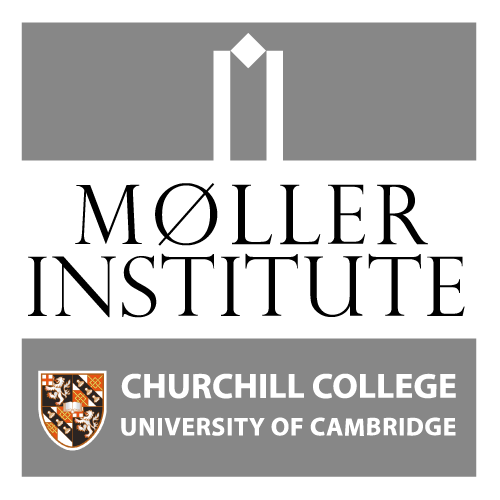Abstract
Sometimes, I’m asked what the essence of Nordic Leadership is. The obvious answer is trust. Trust in yourself, trust in others and trust in the institutions. But it must go both ways.
One anecdote excellently exemplifies this. A journalist asked an 8-year-old Danish boy, “Do you respect your teacher?”. And the boy answered, “Yes, if she respects me”. Such matter-of-fact communication at eye level creates the foundation for mature relationships. Posed with an unprecedented pandemic challenge, companies have had to push and innovate on the fly. It requires culture, loyalty and a goodwill buffer. And it can only be done through continuous nurturing of the teams through a leadership style empowering the employees. The burden of managing these strong-willed individuals eventually falls on the shoulders of the leaders.
During the pandemic, we have seen how the job market is becoming increasingly fluid as employees have realised that they have a choice between staying or going. Employees also have the choice between working remote or onsite. According to a recent analysis from The Economist the global emerging preference seems to be working from home 1.5 days a week, which means WFH 1-2 days and working onsite 3-4 days a week. This new way of working first of all, necessitates trust.
A second critical dimension is digitalisation. Societies, industries and companies that are heavily digitised share a significant upside. They are much better prepared for the distributed workforce of the future. Technological friction is less which means that fluent communication is easier. Trust is the shortest distance between two individuals.
Key recommendations
- Trust is the fundamental social enzyme binding together individuals and organisations
- Co-creation is the route to sustained success, standardisation and fixed process are the models of the past
- Control is no longer a mechanism organisations can use to drive productivity – management has been disintermediated by the tools and mindsets we have now been given
- We each hold the key to effectiveness – take time to stop and think, what can I do differently?
Sometimes, I’m asked what the essence of Nordic Leadership is.
The obvious answer is trust.
Trust in yourself, trust in others, and trust in the institutions. But it must go both ways.
One anecdote excellently exemplifies this.
A journalist asked an 8-year-old Danish boy, “Do you respect your teacher?” And the boy answered, “Yes, if she respects me”.
– Unknown
Such matter-of-fact communication at eye level creates the foundation for mature relationships. Trust is the one thing that changes everything.
Let’s start by diving deeper into the cultural dimension
I will use one example that I know very well, namely myself. I define myself as an egalitarian elitist. I’m both Danish and French, and I like to compare and contrast different cultures. Of course, I am totally aware that a Japanese or Nigerian perspective would emphasize the parallels and differences to an even higher degree.
I was born in Denmark, the home of Soren Kierkegaard, who is widely considered to be the first existential philosopher. From Denmark I gained:
- my pragmatic approach (How can we do better together?)
- my trustful nature (All people want to do good)
- my happy perspective on life (Denmark is consistently ranked among the happiest countries in the world)
- my egalitarian belief (We are all basically the same)
- my technological confidence (Denmark is one of the most digitalised countries in the world).
I was raised in a French culture, Jean-Paul Sartre being the rock star and Albert Camus the James Dean of contemporary philosophy. From France I gained:
- my intellectual prism (Who am I?)
- my abstract approach (Which model can we build to represent this?)
- my influence from René Descartes with philosophy as a thinking system (There is an inner logic to all things)
- my elitist view, striving for excellence (We must aim at mastery)
- my belief in grand projects (This is possible – against all odds).
This upbringing has taught me the value of choice, action and responsibility – the core elements of existentialist thinking.
Let’s now generalise taking the example of typical Danish culture
Kai Hammerich and Richard D. Lewis, in their book “Fish Can’t See Water – How National Culture Can Make or Break Your Corporate Strategy” (Wiley, 2013, p. 199) describe the key Danish traits as follows:
- Short-term pragmatism
– Flexibility, creativity, opportunism, and short-term orientation - Independence and non-confrontation
– Friendly, optimistic, curious, humorous, and non-confrontational style
– Independence (respect for the individual), individualism - Low power distance combined with collectivism
– Teamwork, group, and consensus orientation
– Meritocratic
– Power is accepted, if not used overtly - Skepticism to outsiders
– Tend to stick together
– “Don’t stand out and don’t be different”, i.e. it is advisable to simply “blend into this homogeneous society”
– “Don’t tell us what to do” – stubbornness when threatened as a group
Most people associate Denmark with Nordic core values such as welfare, healthcare, green, and the renowned “hygge”, which roughly translates to “cosiness”, but it means so much more than that. In essence, “hygge” means creating a warm atmosphere and enjoying the good things in life with good people.
In this country with superior digital infrastructure, all communication from public authorities to citizens is digital. And we basically trust each other. So when a citizen contacts for example the tax authorities, her expectation is to get good, objective service in a respectful tone. And this is what happens. Professional advice is given out in a friendly, collaborative tone. The objective of the conversation is to reach the optimal solution for the citizen. In the Nordic perspective, you expect others to perform and to deliver their tasks on time. You don’t need to control them. Trusting is the default behaviour. This also goes for public service. Therefore, the initial transition to remote work and education in the beginning of the pandemic was rather seamless. With trust and digitalisation, the switch was surprisingly smooth.
How does this Nordic Leadership style fit into the concept of hybrid working?
The pandemic is the ultimate organisational stress test. Posed with an unprecedented challenge, companies have had to push and innovate on the fly. This requires a resilient culture, loyalty, and a goodwill buffer. And it can only be done through continuous nurturing of the teams through a leadership style empowering the employees. During the pandemic, we have seen how the job market is becoming increasingly fluid as employees have realised that they have a choice between staying or going. The burden of managing these strong-willed employees eventually falls on the shoulders of the leaders.
Employees now have the choice between working remote or onsite. According to reports from around the world, the emerging global preference seems to be working from home 1.5 days a week, which means WFH 1-2 days and working onsite 3-4 days a week. It’s a major step away from the 9 to 5 work mentality. It is a cultural shift documenting the effect of digitalisation on our traditional industrial mindset. It is truly a tectonic shift in our perception of work life. This leads me to redefine BC as Before Corona.
This new way of working first necessitates trust. Digitalisation, distance, and decentralisation also play a major role. Societies, industries, and companies that are heavily digitalised share a significant upside. Technological friction is less which means that fluent communication is made easier. These entities are much better prepared for distance working and the distributed workforce of the future. Societies, industries, and companies with a low power distance are much more at ease with a decentralised organisational structure.
Deloitte, in their 2021 Global Resilience Report, clearly conclude that diversity and inclusion promote organisational agility through flexible working conditions. The conservative corporate mindset is the antithesis of an organic strategy. If you haven’t built trust, you cannot get truthful feedback. You simply need to delegate authority and decision-making. It is difficult for a centralised corporation to accommodate and extract the diverse sets of expertise needed for rapid innovation.
All in all, it boils down to culture and communication. Édouard Herriot, the French statesman, famously said,
“Culture is what remains when we have forgotten everything”.
This quote made a mark on me, since it was my mother – who suffers from dementia – who reminded me of it. Taking her as a case, belonging to the French bourgeoisie, she has a distinctly different attitude compared to the Nordic trustful behaviour. Somehow, her instincts tell her that somebody is out to get her: The government, the institutions, the others. This mistrust is clearly present in the French citizens’ reaction to testing and vaccination. They are somehow against.
French society is also characterised by a lack of delegation. Hierarchies thrive and roles, rules, and responsibilities are limiting factors. It is not a customer-centric perspective. The person who is closest to the customer unfortunately seldom has the mandate to solve the problem. One way of abandoning these limitations is to answer the question: What is this in service of?
There is no doubt that we need a new way of leadership style to create and sustain motivation, unity, and engagement as well as secure productivity in a post Corona reality. The era of standardisation and predictability is being challenged. I believe that co-creation is the model of the future. Delegation of authority, flexibility, idea generation and knowledge sharing will be the rule of the day. When innovation is based on co-creation, each team member needs to have a voice. In this context, hierarchies and top-down management are major roadblocks. Disruptive and fast-paced market conditions will mean a goodbye to silo thinking.
How have we all changed? And therefore, what do we need to change?
Our experience of the pandemic has changed us all. You and I are not the same persons as we were when we entered the first lockdown. We might think that we are, but these 18 months have had a significant impact on how we see the world. I emerge a different person. I am a different person due to what I have experienced.
When re-boarding we must respect the huge differences of our individual experiences. Some have had a hard time in a cramped apartment with children. Others have worked from their summer house with a nice view. For some it has been an extremely stressful experience and for others it has been cloud nine. Now, coming back together we must consider all these individual differences. There are no right or wrong answers. You cannot take my experience away from me.
Hybrid working fits very well into the megatrends of individualisation and disintermediation. Why sit in a queue on the highway when you may as well perform your tasks from home? Why use several hours a day in public transport when that time could be spent working or being with your family? Rules, roles, and responsibilities need to be re-designed to meet the flexibility demand of the new reality. An excellent quote to illustrate the independent mind of many future employees is, “If I was meant to be controlled, I would have come with a remote”.
Many employees have tasted freedom! They want it all. And they want it now!
What can we do to secure a successful re-boarding?
How do we then best re-enter our daily work life? Well, there are as many answers as there are employees. A CEO for a company with 8,000 employees told me, “This exercise is like integrating 8,000 companies – simultaneously!” Leadership means walking the thin line between on the one side top-down hierarchy and results and on the other side utmost trust and respect. In these pandemic times, this is more relevant than ever. Leaders need to trust their colleagues – most of whom are working remotely. Real human interaction necessitates low power distance. Communication needs to be both hi-tech and hi-touch.
We still need to develop a well-functioning model for hybrid meetings. I haven’t yet participated in one single meeting where the remote participants were not de-coupled from those attending in person. We have obtained a certain expertise – not yet mastery – in conducting pure digital meetings. Through the years we have also honed a model for conducting all-physical meetings. But the combination of the two is still a mess and something we need to work on.
Insurance companies report a decrease in the number of stress-related cases during the pandemic. However, they also report a 25% increase in cases related to anxiety and depression when you compare the first 5 months of 2021 to the first 5 months of 2020. Employees and employers both have a certain set of implicit and explicit preferences. Now the unprecedented challenge is to match these preferences and find common ground for productivity and well-being. This is one of the greatest organisational experiments ever conducted. The physical and mental infrastructure is fundamental. Time is of the essence.
What do the millennials expect?
The millennial generation is the biggest cohort in our history. They will comprise 75% of the workforce in 2025 (World Economic Forum, 2020). Millennials will drive leadership culture for the rest of our lives. A natural question in future job interviews will be: Remote or onsite? This question will come from both managers and potential employees. Actually, it is not a question of either-or. If you go to the meta level, it is always a question of both-and.
Millennials expect purpose, connectivity, choice, sustainability, diversity, equality, recognition, healthy living, agility, flexibility, convenience, relationship with boss, task orientation, learning, feedback, play hard … Does that ring a bell? On all but one of these parameters, the Nordic Leadership style fits perfectly. Diversity is the characteristic which is the odd-one-out. Denmark is an extremely homogenous country. We think of ourselves as very liberal, inclusive, and open-minded. The truth is that our exposure to real diversity is very limited. So, diversity remains more of a concept or a token value than being rooted in our daily behaviour.
According to the inventor of The Hammer and the Dance, Tomas Pueyos (Remote Work Is Inexorable – Because It Offers What Most Stakeholders Want, Newsletter, June 3, 2021) the consequences of remote work are life-transforming and society-shattering. He estimates that in 2022, 10-25 % of all employees in Western developed economies will work remotely. That is huge. His argument is that workers and companies have a common interest in this development. We have already touched upon major benefits for the employees in terms of flexibility and convenience. For the employers, there are significant financial gains to be derived from lower wages, lower real estate costs, less benefits, less employee turnover, less absenteeism, and reduced commuting time partly converted into productive time. This represents an interesting business case, indeed.
I had two interesting comments from two of my clients. One, who is a CEO, told me that the pandemic and the employees’ behaviour had unequivocally increased his trust in them. He emphasized that they had grown and risen to the challenge in unexpected ways. Their collegial mindset and the fluidity of their roles had delivered an exceptional performance. The other, who is a business owner, told me that she had been considering a sales and lease back arrangement for their headquarter. This was now all up in the air due to new considerations of hybrid working. Are open landscapes at all compatible with Zoom hybrid meetings? Will we need many more offices for confidential conversations? Will these confidential conversations, where we need to communicate both verbally and physically – allowing us to read micro-expressions – become our primary reason for coming into the office? These micro-expressions are very brief, involuntary facial expressions that humans make when experiencing an emotion. They usually last 0.5–4.0 seconds and cannot be faked – and they cannot be deciphered in a Zoom conversation!
And now to some practical advice
Qualities such as resilience, emotional intelligence and empathy, good team working and communication are what you are going to need in the months and years ahead. Stop up and think: “What can I do different?”. Now is the time to contribute with creative ideas and to change default behaviour.
I had the chance to have a look at a Danish public organisation’s playbook for their post-corona rules of engagement. It is a typical change management process:
- Hold joint meetings where you talk things through
- Invite for extra 1:1 conversations
- Consider the individual needs of each employee
- Accept and provide space for more loose talk than usual
- Pay attention to (re-)building relationships
- Make room for social initiatives
- Set a clear frame and direction for the initial period.
And then follows a specific guide for actions to be implemented:
- Be even more personal than usual
- Praise more than usual
- Be extremely specific regarding guidelines for who work where and when
- Take extra care that some employees are not viewed as privileged
- Use various communication channels to reach everybody (e-mail, intra-net, social media, virtual meetings, physical meetings)
- Avoid stigmatization due to Covid infection
- Ensure unity across the board.
This advice can be very useful, when – not if – we are confronted with a new pandemic. The key words are presence, dialogue, praise, security, well-being, extending the shadow of the past, and painting a promising picture of the future.
This terminology perfectly represents Nordic leadership values. So, all in all, the conclusion is that Hybrid Working rhymes very well indeed with Nordic Leadership. Trust is the fundamental social enzyme binding together individuals and organisations, and our deeply digitised environment makes it technically seamless.
“Trust is the shortest distance between two individuals.”
– Unknown
One final word of caution: I see more and more countries being divided on the issue of vaccination. Coming back to the cultural aspects mentioned in the beginning of the article, there is a direct correlation between trust in society and vaccination propensity. In some countries like France a scission is clearly felt: Between countryside and cities, between province and capital (against Paris) and between social classes. In countries such as Denmark, there is much lesser resistance to central initiatives. Danes mostly believe that the government is acting in their best interest.
That is not the case in France, where Emmanuel Macron recently (and provocatively) said: “The virus will not respond to demonstrations!”
Faced with this global pandemic, we have only one way out and that is to stay united. We’re in this together.




